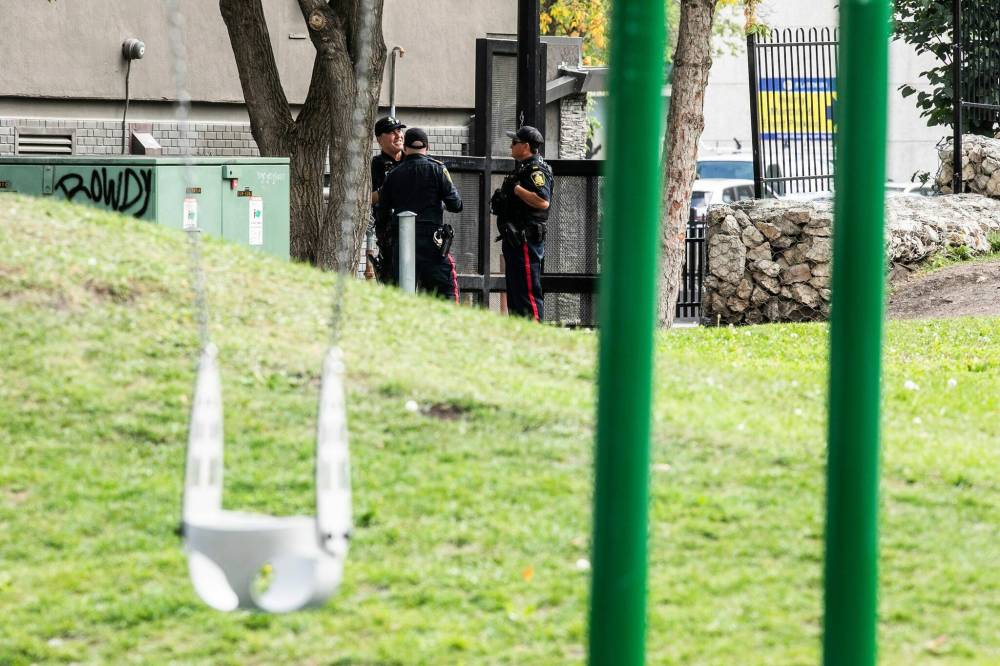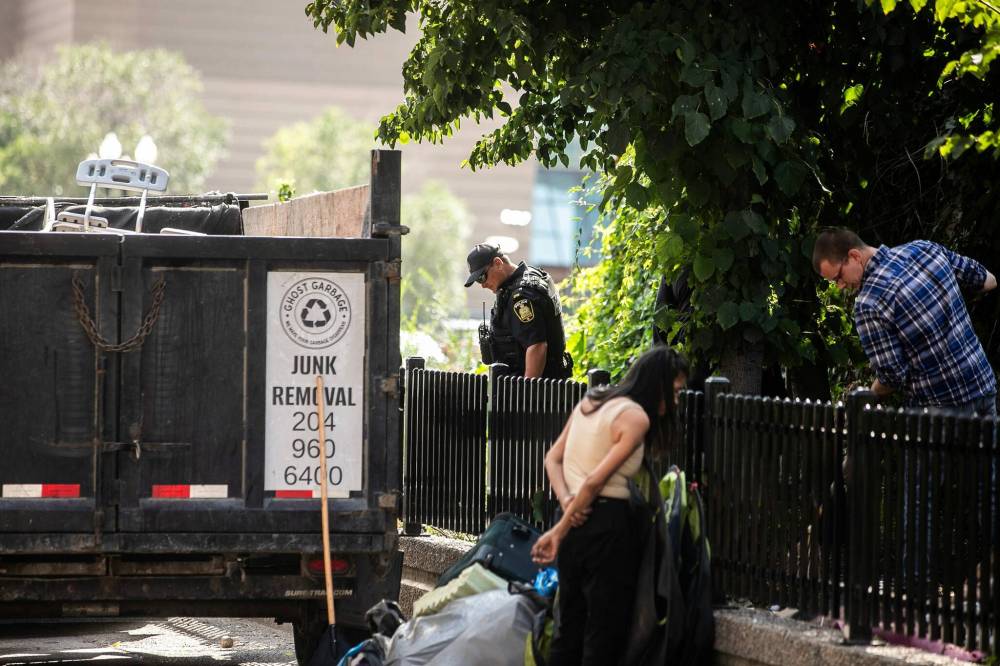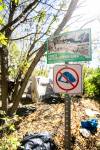City takes step closer to banning camps from key public spaces
Read this article for free:
or
Already have an account? Log in here »
To continue reading, please subscribe:
Monthly Digital Subscription
$0 for the first 4 weeks*
- Enjoy unlimited reading on winnipegfreepress.com
- Read the E-Edition, our digital replica newspaper
- Access News Break, our award-winning app
- Play interactive puzzles
*No charge for 4 weeks then price increases to the regular rate of $19.95 plus GST every four weeks. Offer available to new and qualified returning subscribers only. Cancel any time.
Monthly Digital Subscription
$4.99/week*
- Enjoy unlimited reading on winnipegfreepress.com
- Read the E-Edition, our digital replica newspaper
- Access News Break, our award-winning app
- Play interactive puzzles
*Billed as $19.95 plus GST every four weeks. Cancel any time.
To continue reading, please subscribe:
Add Free Press access to your Brandon Sun subscription for only an additional
$1 for the first 4 weeks*
*Your next subscription payment will increase by $1.00 and you will be charged $16.99 plus GST for four weeks. After four weeks, your payment will increase to $23.99 plus GST every four weeks.
Read unlimited articles for free today:
or
Already have an account? Log in here »
On the same day the mayor’s cabinet voted to prohibit homeless camps in many key public spaces, including where children play, one was being moved out of Central Park, considered the “backyard” to 4,000 inner-city families.
On Tuesday, council’s executive policy committee voted to ban encampments from being set up at playgrounds, pools, spray pads, recreation facilities, schools, daycares, adult care facilities, medians, traffic islands, transit shelters, bridges, docks, piers, rail lines and rail crossings.
If council casts the final vote of approval, encampments would also be prohibited when a “life safety issue exists” and wherever they could pose a hazard or obstruction to vehicle or pedestrian traffic.
“What we have put together here, I am confident, would stand the legal test. …We just can’t allow encampments everywhere. Enough is enough. We can’t say anywhere you want to set up a tent, you’re free to do so,” said Mayor Scott Gillingham.
MIKAELA MACKENZIE / FREE PRESS Police dismantle an encampment in Central Park on Tuesday.
At a camp next to a stone wall on the south side of Central Park, behind the Quest Inn on Ellice Avenue, all that remained were a suitcase, a deconstructed tent and a few garbage bags after foot patrol officers spoke to its inhabitants in the afternoon.
“This afternoon, (officers) were proactively patrolling in the Central Park area when they were approached by community members, including parents of a nearby daycare who were concerned about some hazardous materials, such as needles on the ground,” police said in an email to the Free Press.
Police connected some of them to community support services, while others left, police said.
“They were given the opportunity to take whatever property they wanted and any remaining and hazardous items were cleaned up with the partnership of 311,” the email said. “At no time did officers dismantle any structures within the encampment.”
One woman, who said she had been living there for a couple of months, said about 10 cadets and uniformed police arrived around 1 p.m.
MIKAELA MACKENZIE / FREE PRESS One resident said about 10 cadets and uniformed police arrived around 1 p.m.

Another woman, who declined to give her name, said they were given 30 seconds to gather their belongings.
“This hurts me,” said Elaine, who asked that her last name not be published. “Where am I supposed to go? The riverbank? It’s dark there, and I’m alone. I’ll be sexually assaulted out there.”
Val Cavers, executive director of the Mosaic Newcomer Family Resource Network, which is on Carlton Street, across from the park, said seven daycares use the space.
“That park is the only green space for them,” she said. “They all live in apartments. That’s their backyard. So it’s an important place.”
Cavers said there have been many instances in which needles and weapons were found in the park.
The provincial Community Child Care Standards Act requires daycares to have access to a green space within a set distance and to use it daily, weather permitting, to maintain their permits.
“This is not a solution for homelessness.”
Gillingham said the city proposal strikes a balance between the needs of the homeless community and all other Winnipeggers.
“This is not a solution for homelessness. We know that the solution is housing and addiction services and mental health services for people who are struggling with homelessness right now… (These) are some rules because there is an obligation we have, as a city, to protect the people of this city, the children of the city,” said Gillingham.
Coun. Cindy Gilroy (Daniel McIntyre), who authored the motion, spoke as a delegate at EPC.
“I’ve heard from many of the schools in (my) area that they are challenged with this. They would like to use the parks… They’re really struggling with making sure that children feel safe.”
The mayor noted a call to “prioritize” enforcement of the bans from one hour after sunrise to one hour before sunset acknowledges a lack of housing may still lead people to stay in public spaces overnight.
If council approves the changes, the city’s public service is expected to report back with a formal policy to implement them in about two months.
Marion Willis, executive director of St. Boniface Street Links, offered a mixed view of the proposed changes.
“I don’t think that there should be encampments in parks, around playgrounds, around where children are playing,” said Willis.
However, she is concerned the changes could “scatter people” throughout additional public spaces, such as libraries and ATM vestibules, during the daytime.
Main Street Project, which runs the only 24/7 outreach in the city, said it wants more information about the ban, including whether it fits with the province’s Your Way Home strategy to end camp living.
“It would be great to engage with council to understand better the root causes of what they are trying to respond to with this motion, so we can develop a sector-wide response that meets everyone’s needs,” executive director Jamil Mahmood said, adding moving people out of a camp is complex work that involves support for mental health, substance abuse and trauma.
Red flags
Lorie English, executive director of the West Central Women’s Resource Centre, said the motion raises red flags.
“We need greater clarity on what the objective is,” English said. “We all want the same thing: we want people safely housed, we want people feeling safe in their communities. But I also think we need to be cautious that we don’t prioritize the safety of some over the safety of others.”
Kate Sjoberg, executive director of Resource Assistance for Youth, said when her team receives a complaint about someone living in areas frequented by children and families, they talk to the individual.
“We’re often engaged in conversations with an unsheltered person to see if there is something we can work out,” Sjoberg said. “It’s an approach that upholds all of the values and best practices.”
Willis urged the executive policy committee to create a “managed encampment to housing” pilot project that offers housing plans, as well as safety and fire prevention service, toilets, a water supply, tents and heaters.
Those staying in the spaces would be required to work on a housing plan, she said, deeming that the key element that makes the model differ from “sanctioned encampments” in other Canadian cities.
Gillingham said he would need more information to determine if the “managed” model makes sense to try in Winnipeg.
joyanne.pursaga@freepress.mb.ca
scott.billeck@freepress.mb.ca

Born and raised in Winnipeg, Joyanne loves to tell the stories of this city, especially when politics is involved. Joyanne became the city hall reporter for the Winnipeg Free Press in early 2020.

Several wise folks — ok, ok, journalism types — once told Scott he better make sure he can report on news before he learns to write about sports. In what can only be described as a minor miracle, he listened.
Our newsroom depends on a growing audience of readers to power our journalism. If you are not a paid reader, please consider becoming a subscriber.
Our newsroom depends on its audience of readers to power our journalism. Thank you for your support.














